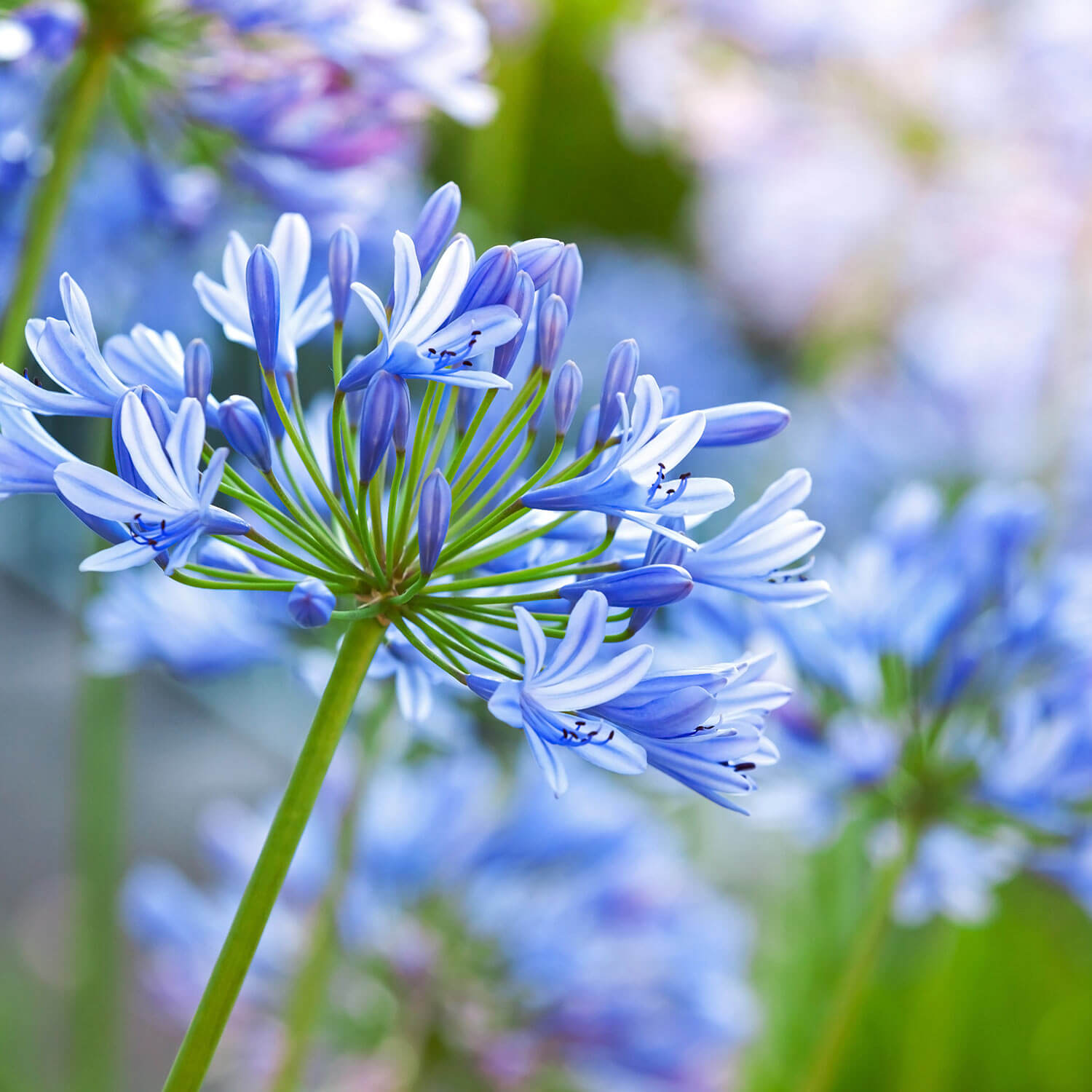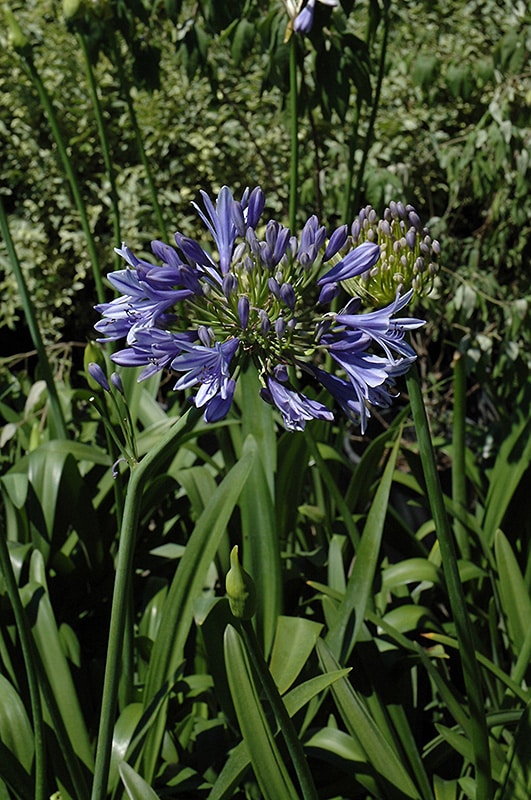Sensational Agapanthus: Enhancing Your Yard's Charm
Sensational Agapanthus: Enhancing Your Yard's Charm
Blog Article
Unleashing the Secret to Effective Agapanthus Growing: Advice for a Flourishing Yard
In the realm of horticulture, growing agapanthus effectively calls for a tactical technique that encompasses numerous aspects of plant care. By comprehending the nuances of agapanthus growing, one can develop an atmosphere where these plants flourish and grow abundantly.
Planting Agapanthus: Ideal Practices
When planting Agapanthus, appropriate soil preparation is crucial for making sure effective development and advancement of these attractive blossoms. Agapanthus, typically referred to as Lily of the Nile or African lily, flourishes in well-draining soil with a somewhat acidic to neutral pH level - Agapanthus. Before growing, it is essential to amend heavy clay dirts with natural matter such as compost or peat moss to boost drain and offer crucial nutrients for the plants
To grow Agapanthus, select an area that gets complete sunlight to partial color, as this will promote healthy growth and plentiful blooming. Dig an opening twice the size of the plant's root sphere and place the Agapanthus at the exact same depth it was previously growing. Delicately backfill the hole with soil, weighing down strongly to eliminate any air pockets around the roots.
Water the newly planted Agapanthus extensively and continue to keep the dirt equally damp, particularly throughout the plant's energetic growing season. Agapanthus. Applying a well balanced fertilizer once a month can further support the plant's growth and blooming. By adhering to these best practices for planting Agapanthus, you can produce a sensational display screen of these captivating flowers in your yard
Perfect Soil Conditions for Agapanthus
For optimal growth and flowering success of Agapanthus plants, making certain the dirt conditions are optimal is critical. Agapanthus prospers in well-draining dirt with a somewhat acidic to neutral pH level varying from 6.0 to 7.0. This sort of dirt permits sufficient water drainage, stopping waterlogging which can cause root rot. To boost dirt drainage, consider including raw material such as garden compost or peat moss when preparing the growing website. Additionally, Agapanthus chooses soil that is rich in nutrients, so incorporating a balanced plant food throughout the expanding season can advertise healthy and balanced development and lively blossoms.

Watering and Feeding Tips
To make sure healthy and balanced development and lively blooms, proper watering and feeding techniques are important for successful Agapanthus cultivation. Agapanthus plants profit from normal watering, particularly during the growing season.
When it comes to feeding Agapanthus, a balanced fertilizer with equal parts nitrogen, phosphorus, and potassium can be applied in the spring to promote healthy and balanced development and flowering. Slow-release fertilizers are ideal for offering nutrients progressively over an extensive period. Stay clear of over-fertilizing, as this can lead to too much foliage growth at the expenditure of blossoms.
Furthermore, incorporating organic issue like garden compost into the soil can boost nutrient levels and enhance dirt structure, aiding in the total health of the Agapanthus plants. By adhering to these watering and feeding tips, gardeners can ensure their Agapanthus plants grow and create sensational displays of flowers.
Pruning and Deadheading Strategies
Proper pruning and deadheading techniques play a crucial duty in preserving the health and wellness and looks of Agapanthus plants, complementing the important techniques of watering and fertilizing for effective farming. Pruning Agapanthus includes removing spent blossom heads, yellowing or dead leaves, and total shaping of the plant to promote much better growth. Deadheading, the process of eliminating discolored blossoms, not only improves the plant's look yet also urges more blooming.
When deadheading Agapanthus, it is suggested to snip off the flower stem at the base utilizing sharp, tidy shears. This procedure redirects the plant's power from seed manufacturing back into root and foliage growth, advertising a healthier and much more robust plant. Routine deadheading can prolong the blooming period of Agapanthus and stop self-seeding, which can bring about congestion.
In regards to trimming, Agapanthus normally take advantage of a light trim after flowering to tidy up the plant and encourage fresh growth. Reducing the spent blossom stems and getting rid of any kind of damaged or dead foliage helps preserve the plant's vigor and total appearance. However, it is vital to prevent cutting into the crown of the plant, as this can compromise its wellness.

Protecting Agapanthus From Vermins and Diseases
Carrying out efficient pest and condition monitoring techniques is important to guarding the health and vigor of Agapanthus plants in farming. One typical insect that impacts Agapanthus is the Agapanthus borer, a caterpillar that passages into the plant, triggering damages to the blossoms and leaves.
In enhancement to parasites, Agapanthus are prone to conditions such as origin rot and fungal leaf places. By remaining vigilant this hyperlink and addressing pest and disease issues quickly, garden enthusiasts can aid their Agapanthus grow and grow.

Conclusion
In verdict, effective farming of agapanthus needs correct planting methods, perfect dirt problems, sufficient watering and fertilizing, normal pruning and deadheading, and security from illness and bugs. By complying with these tips and techniques, garden enthusiasts can make certain a growing yard loaded with gorgeous agapanthus blooms. Agapanthus. Keep in mind to keep regular care and focus to detail to advertise the health and durability of these stunning plants
When planting Agapanthus, appropriate dirt prep work is essential for guaranteeing successful growth and advancement of these attractive flowers.Water the recently planted Agapanthus thoroughly and continue to maintain the soil uniformly moist, specifically throughout the plant's energetic expanding period.For optimum development and blooming success have a peek at this website of Agapanthus read this article plants, guaranteeing the soil conditions are perfect is important. When growing or hair transplanting Agapanthus, guarantee the soil is well-prepared to supply the essential structure for the plants to develop themselves efficiently. One usual parasite that affects Agapanthus is the Agapanthus borer, a caterpillar that passages into the plant, causing damage to the leaves and blossoms.
Report this page